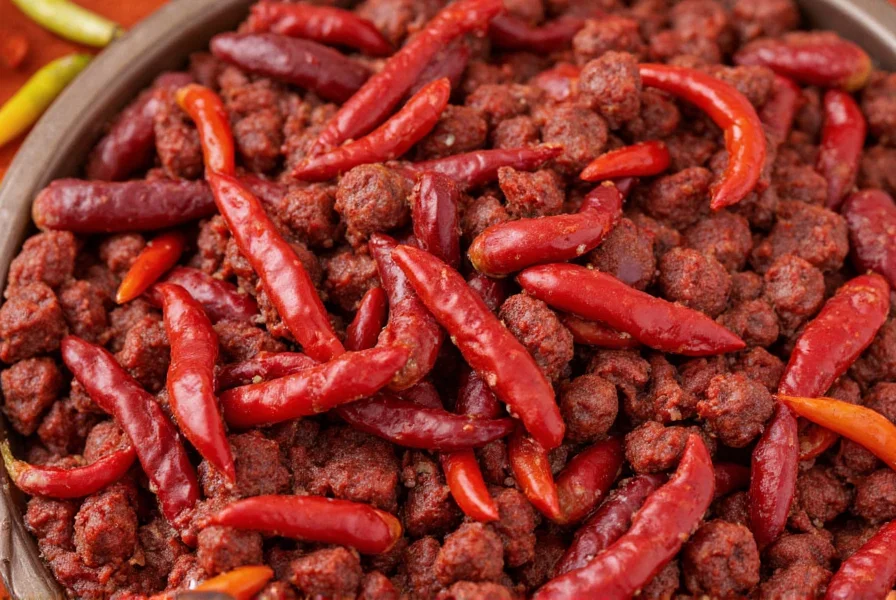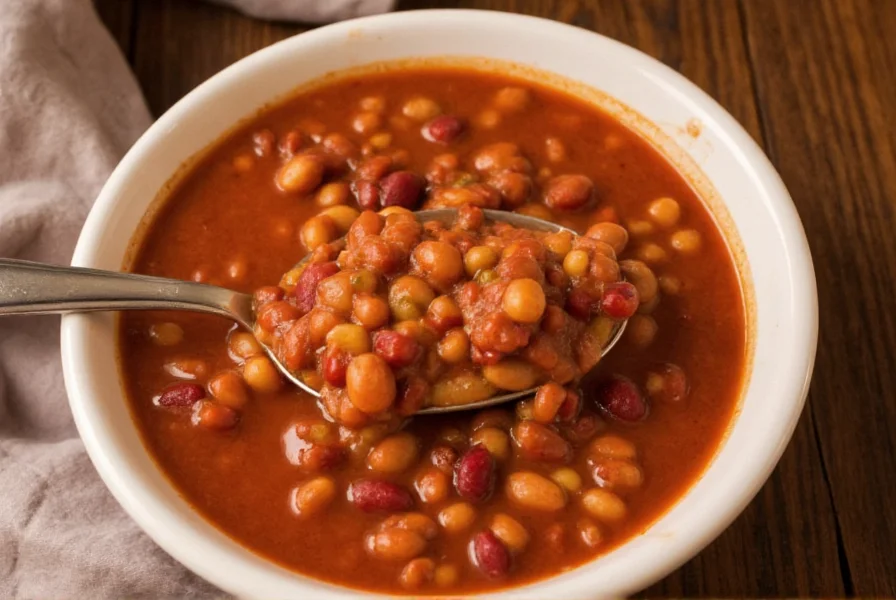For decades, the "beans in chili" debate has divided cooks across America. While bean-containing chili is popular in many regions, traditional no bean chili represents the original preparation method that emerged in Texas and Northern Mexico. This style prioritizes deep meat flavors and complex chili pepper profiles without the starchiness of beans.
The History Behind Beanless Chili
Chili con carne (chili with meat) originated among cattle drivers and vaqueros in Texas during the 19th century. These cowboys needed portable, non-perishable food that could be cooked over open fires. Their simple recipe combined dried beef, suet, dried chili peppers, and spices—no beans included. The addition of beans came later as chili spread beyond Texas and adapted to different regional preferences.
The International Chili Society and other competitive chili organizations explicitly prohibit beans in their championship categories. According to their standards, authentic chili con carne must contain meat, chili peppers, and spices—nothing more. This strict definition preserves the historical integrity of the dish.
Why Skip the Beans? Flavor and Texture Benefits
Excluding beans from chili serves several culinary purposes:
- Concentrated meat flavor - Without beans absorbing liquid and flavor, the meat's richness dominates
- Better texture control - Bean starch can make chili overly thick or gummy
- Traditional authenticity - Honors the original preparation method
- Dietary flexibility - Naturally lower in carbohydrates for certain eating plans
Professional chili makers note that beans can mask subtle flavor nuances from carefully selected chili peppers. In competitive chili circles, judges specifically look for the clean, meat-forward profile that defines championship-worthy no bean chili.
| Chili Style | Bean Status | Key Characteristics | Regional Association |
|---|---|---|---|
| Texas Red | No beans | Meat, chili peppers, spices only | Texas, competitive chili |
| Cincinnati Style | With beans | Served over spaghetti, with chocolate | Ohio region |
| New Mexico Style | Optional | Green chili based, often with pork | New Mexico |
| Midwest Style | With beans | Tomato-heavy, often with kidney beans | Midwestern United States |
Essential Ingredients for Authentic No Bean Chili
Creating exceptional no bean chili requires careful ingredient selection:
Meat Selection
Use chuck roast or brisket cut into 1/2-inch cubes. These well-marbled cuts provide the fat content necessary for rich flavor development. Avoid lean meats that will dry out during the long cooking process. For authentic Texas-style chili, some cooks use only meat and chili peppers—no additional vegetables.
Chili Peppers
The foundation of great no bean chili is a thoughtful blend of dried chili peppers. Essential varieties include:
- Ancho (mild, fruity)
- Guajillo (medium heat, tangy)
- Chipotle (smoky, medium heat)
- Pasilla (complex, earthy)
Toast dried peppers in a dry skillet before rehydrating to maximize flavor. Blend rehydrated peppers with cooking liquid to create a smooth base.

Classic No Bean Chili Recipe
This authentic Texas-style recipe yields 6 servings and requires approximately 3 hours of cooking time:
Ingredients
- 2 lbs beef chuck, cut into 1/2-inch cubes
- 4 dried ancho peppers, stems and seeds removed
- 3 dried guajillo peppers, stems and seeds removed
- 2 dried chipotle peppers
- 1 large white onion, finely chopped
- 4 cloves garlic, minced
- 2 tbsp cumin
- 1 tbsp oregano
- 1 tsp cocoa powder
- 2 cups beef broth
- Salt to taste
Instructions
- Toast dried peppers in a dry skillet over medium heat for 1-2 minutes until fragrant
- Place toasted peppers in hot water to rehydrate for 20 minutes
- Brown meat in large pot over medium-high heat (do not overcrowd)
- Remove meat and sauté onions until translucent, then add garlic
- Blend rehydrated peppers with 1 cup broth until smooth
- Return meat to pot with pepper puree, remaining broth, and spices
- Simmer covered on low heat for 2-3 hours until meat is tender
- Skim excess fat before serving

Common Mistakes to Avoid
Even experienced cooks make these errors when preparing no bean chili:
- Skipping the pepper toasting step - This crucial step develops deeper flavor compounds
- Using pre-ground chili powder - Freshly made chili paste provides superior flavor complexity
- Overcrowding the pan when browning meat - Causes steaming rather than proper searing
- Adding too much liquid - Authentic chili should be thick and hearty, not soupy
- Not allowing sufficient cooking time - True flavor development requires slow cooking
Serving Suggestions and Variations
Traditional no bean chili is served with minimal toppings to showcase the chili itself. Essential accompaniments include:
- Saltine crackers or cornbread
- Finely diced white onion
- Lime wedges
- Shredded cheddar cheese (optional)
For dietary adaptations:
- Vegetarian option: Substitute mushrooms and textured vegetable protein for meat
- Lower sodium version: Use low-sodium broth and increase herbs for flavor
- Spicier variation: Add a small amount of cayenne or extra chipotle peppers
Storing and Reheating Tips
No bean chili actually improves in flavor after 24-48 hours as flavors meld. Store in airtight containers:
- Refrigerator: Up to 5 days
- Freezer: Up to 6 months
When reheating, add a small amount of broth or water to restore ideal consistency. Gently warm on stove over medium-low heat, stirring occasionally.











 浙公网安备
33010002000092号
浙公网安备
33010002000092号 浙B2-20120091-4
浙B2-20120091-4